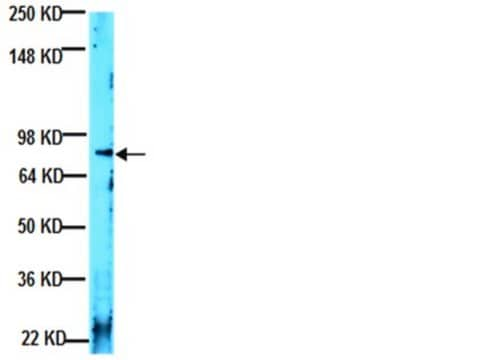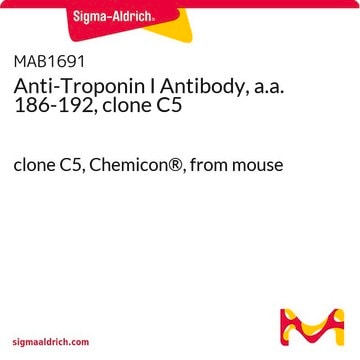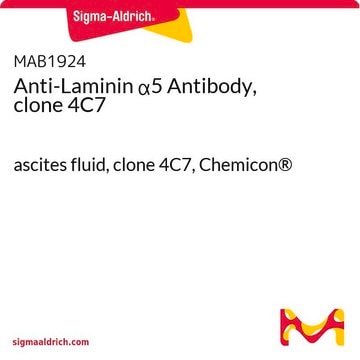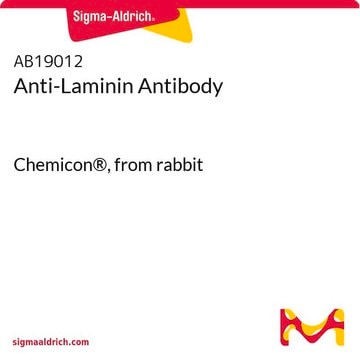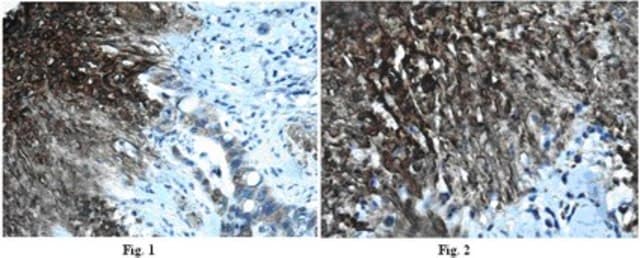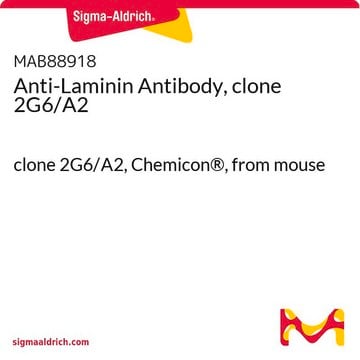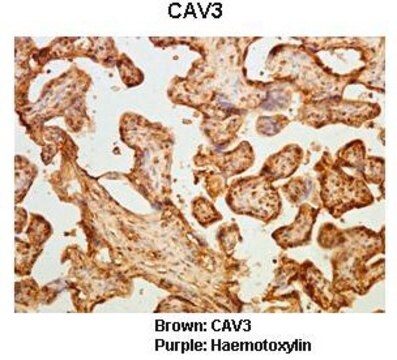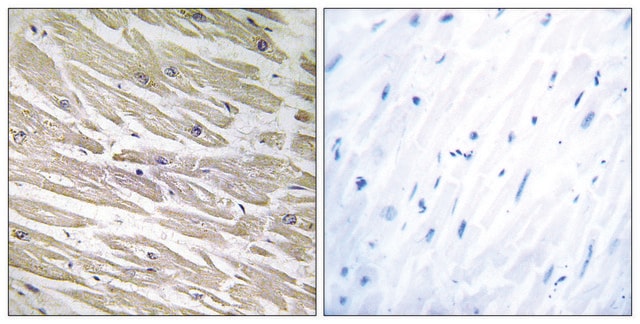L0663
Anti-Laminin-2 (α-2 Chain) antibody, Rat monoclonal
clone 4H8-2, purified from hybridoma cell culture
Synonyme(s) :
Anti-Merosin
About This Item
Produits recommandés
Source biologique
rat
Niveau de qualité
Conjugué
unconjugated
Forme d'anticorps
purified immunoglobulin
Type de produit anticorps
primary antibodies
Clone
4H8-2, monoclonal
Forme
buffered aqueous solution
Poids mol.
antigen ~400 kDa (denatured)
Espèces réactives
human, mouse
Conditionnement
antibody small pack of 25 μL
Concentration
~2 mg/mL
Technique(s)
immunocytochemistry: suitable
immunohistochemistry (frozen sections): suitable
immunoprecipitation (IP): suitable
indirect ELISA: suitable
indirect immunofluorescence: 4-8 μg/mL using acetone-fixed frozen sections of human tongue
microarray: suitable
western blot: suitable
Isotype
IgG1
Numéro d'accès UniProt
Conditions d'expédition
dry ice
Température de stockage
−20°C
Modification post-traductionnelle de la cible
unmodified
Informations sur le gène
human ... LAMA2(3908)
mouse ... Lama2(16773)
Description générale
Laminin, the most abundant structural and biologically active component in basement membrane, is a complex extracellular glycoprotein of 700-900 kDa that plays an important role in many aspects of the cell biology. It is composed of one α chain (approx. 400 kDa, previously called A chain) one β chain (215 kDa, B1) and one γ chain (205 kDa, B2), held together by disulfide bonds.
Anti-Laminin-2 (α-2 Chain) antibody, Rat monoclonal (rat IgG1 isotype) is derived from the 4H8-2 hybridoma produced by the fusion of rat myeloma cells and splenocytes from a Lewis rat immunized with mouse heart laminin-2.1 The antibody is purified from the culture supernatant of hybridoma cells grown in a bioreactor. Anti-Laminin-2 (α-2 Chain) antibody, Rat monoclonal reacts specifically with mouse1 and human2, laminin-2. The epitope recognized by the antibody resides in the N-terminal portion of the α2 chain of laminin.
Spécificité
Immunogène
Application
Actions biochimiques/physiologiques
Forme physique
Notes préparatoires
Stockage et stabilité
Clause de non-responsabilité
Not finding the right product?
Try our Outil de sélection de produits.
En option
Code de la classe de stockage
12 - Non Combustible Liquids
Classe de danger pour l'eau (WGK)
nwg
Point d'éclair (°F)
Not applicable
Point d'éclair (°C)
Not applicable
Certificats d'analyse (COA)
Recherchez un Certificats d'analyse (COA) en saisissant le numéro de lot du produit. Les numéros de lot figurent sur l'étiquette du produit après les mots "Lot" ou "Batch".
Déjà en possession de ce produit ?
Retrouvez la documentation relative aux produits que vous avez récemment achetés dans la Bibliothèque de documents.
Les clients ont également consulté
Notre équipe de scientifiques dispose d'une expérience dans tous les secteurs de la recherche, notamment en sciences de la vie, science des matériaux, synthèse chimique, chromatographie, analyse et dans de nombreux autres domaines..
Contacter notre Service technique




